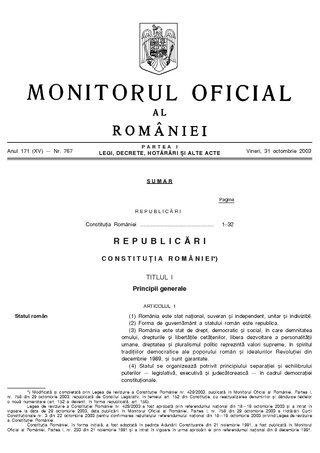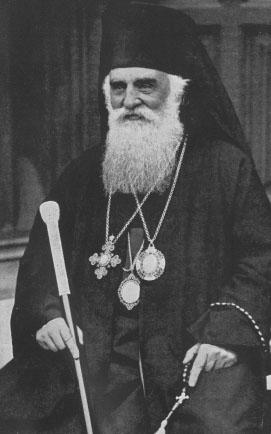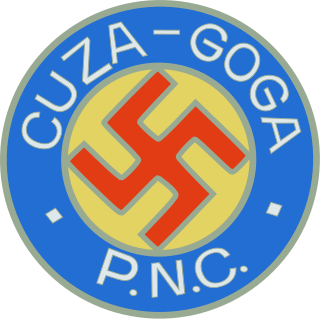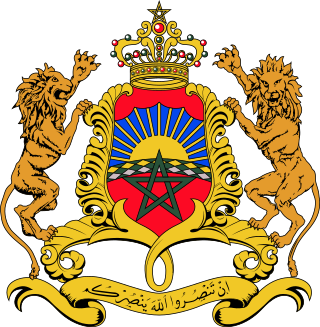A constitutional amendment is a modification of the constitution of a polity, organization or other type of entity. Amendments are often interwoven into the relevant sections of an existing constitution, directly altering the text. Conversely, they can be appended to the constitution as supplemental additions, thus changing the frame of government without altering the existing text of the document.

The prime minister of Romania, officially the prime minister of the Government of Romania, is the head of the Government of Romania. Initially, the office was styled President of the Council of Ministers, when the term "Government" included more than the Cabinet, and the Cabinet was called the Council of Ministers. The title was officially changed to Prime Minister by the 1965 Constitution of Romania during the communist regime.

The president of Romania is the head of state of Romania. Following a modification to the Romanian Constitution in 2003, the president is directly elected by a two-round system and serves for five years. An individual may serve two terms. During their term in office, the president may not be a formal member of a political party. The president of Romania is the supreme commander of the Romanian Armed Forces.

The current Constitution of Romania is the seventh permanent constitution in modern Romania's history. It is the fundamental governing document of Romania that establishes the structure of its government, the rights and obligations of citizens, and its mode of passing laws. It stands as the basis of the legitimacy of the Romanian government. Adopted on 21 November 1991, it was approved on 8 December 1991 in a national referendum and promulgated on the same day.

Miron Cristea was a Romanian cleric and politician.

The Senate is the upper house in the bicameral Parliament of Romania. It has 136 seats, to which members are elected by direct popular vote using party-list proportional representation in 43 electoral districts, to serve four-year terms.

Romania elects on a national level a head of state – the president – and a legislature. The president is elected for a five-year term by the people. The Romanian Parliament has two chambers. The Chamber of Deputies has currently 330 members, elected for a four-year term by party-list proportional representation on closed lists. The Senate has currently 136 members, elected for a four-year term by party-list proportional representation on closed lists.
In Australia, referendums are public votes held on important issues where the electorate may approve or reject a certain proposal. In contemporary usage, polls conducted on non-constitutional issues are known as plebiscites, with the term referendum being reserved solely for votes on constitutional changes, which is legally required to make a change to the Constitution of Australia.

The Australian republic referendum held on 6 November 1999 was a two-question referendum to amend the Constitution of Australia. The first question asked whether Australia should become a republic, with a president appointed by Parliament following a bi-partisan appointment model which had been approved by a half-elected, half-appointed Constitutional Convention held in Canberra in February 1998. The second question, generally deemed to be far less important politically, asked whether Australia should alter the Constitution to insert a preamble. Since the early 1990s opinion polls had suggested that a majority of the electorate favoured a republic. Nonetheless, the republic referendum was defeated.

The current Constitution of Ireland came into effect on 29 December 1937, repealing and replacing the Constitution of the Irish Free State, having been approved in a national plebiscite on 1 July 1937 with the support of 56.5% of voters in the then Irish Free State. The Constitution was closely associated with Éamon de Valera, the President of the Executive Council of the Irish Free State at the time of its approval.
The Constitution of Iceland is the supreme law of Iceland. It is composed of 80 articles in seven sections, and within it the leadership arrangement of the country is determined and the human rights of its citizens are preserved. The current constitution was first instituted on 17 June 1944 when Iceland became a republic; since then, it has been amended seven times.

The National Christian Party was a far-right authoritarian and strongly antisemitic political party in Romania active between 1935 and 1938. It was formed by a merger of Octavian Goga's National Agrarian Party and A. C. Cuza's National-Christian Defense League (LANC); a prominent member of the party was the philosopher Nichifor Crainic. Goga was chosen in December 1937 by King Carol II to form a government which included Cuza. The government lasted for only 44 days and was followed by a royal dictatorship by Carol.

The Parliament of Romania is the national bicameral legislature of Romania, consisting of the Chamber of Deputies and the Senate. It meets at the Palace of the Parliament in Bucharest, the capital of the country.

The Great National Assembly was the supreme body of state power of the Socialist Republic of Romania. The Great National Assembly was the only branch of government in Romania, and per the principle of unified power, all state organs were subservient to it. After the overthrow of Communism in Romania in December 1989, the Great National Assembly was dissolved by decree of the National Salvation Front (FSN) and eventually replaced by the bicameral parliament, made up of the Chamber of Deputies and the Senate.

The Government of Romania forms one half of the executive branch of the government of Romania. It is headed by the Prime Minister of Romania, and consists of the ministries, various subordinate institutions and agencies, and the 42 prefectures. The seat of the Romanian Government is at Victoria Palace in Bucharest.

General elections were held in Romania in December 1937. The Chamber of Deputies was elected on 20 December, whilst the Senate was elected in three stages on 22, 28 and 30 December. Voting was by universal male vote, making them the last elections held before female suffrage was introduced.
The 1923 Constitution of Romania, also called the Constitution of Union, was intended to align the organisation of the state on the basis of universal male suffrage and the new realities that arose after the Great Union of 1918.
The 1938 Constitution of Romania was the fundamental law of Romania from the time of its adoption until 1940. It formed the legal basis for the royal dictatorship of King Carol II. It replaced the 1923 Constitution.

A referendum on constitutional reforms was held in Morocco on 1 July 2011. It was called in response to a series of protests across Morocco that began on 20 February 2011 when over ten thousand Moroccans participated in demonstrations demanding democratic reforms. A commission was to draft proposals by June 2011. A draft released on 17 June foresaw the following changes:
A referendum is a direct vote in which an entire electorate is asked to either accept or reject a particular proposal. This article summarises referendum laws and practice in various countries.













